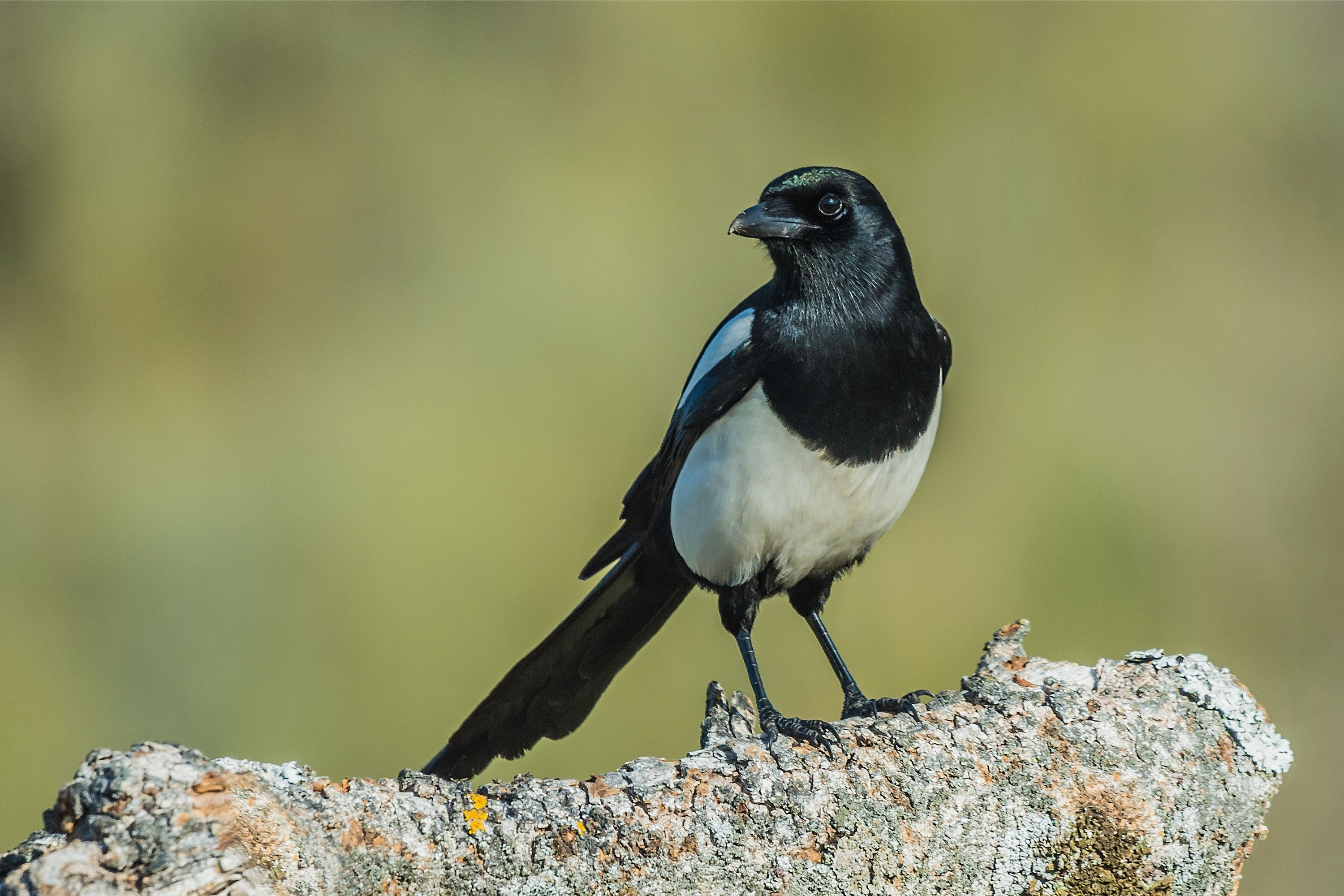Eurasian magpie
(Pica pica)

Description
Pica pica, commonly known as the Eurasian magpie, is a bird species that belongs to the family Corvidae, which includes other intelligent and sociable birds such as crows, ravens, and jays. The Eurasian magpie is a striking bird with a glossy black and white plumage, a long tail, and a distinctive wedge-shaped tail. In this article, we will delve into the fascinating world of Pica pica, exploring its physical characteristics, habitat, behavior, diet, and more. Physical Characteristics The Eurasian magpie is a medium-sized bird, measuring around 45–60 cm in length, including its long tail. It weighs between 180 and 220 g, with males slightly larger than females. The bird has a black head, neck, breast, and tail, with glossy iridescent blue-green or purple plumage on its wings and back. Its belly is white, as are the feathers on its shoulders and upper back. The bird's eyes are bright and intelligent, with a dark iris and a small white patch of skin behind the eye. Habitat and Range The Eurasian magpie is found throughout Europe, Asia, and northern Africa. Its range extends from Portugal and Morocco in the west to eastern China in the east. The bird's preferred habitat is open woodland, parks, gardens, and farmland, but it can also be found in urban areas such as cities and towns. The bird's adaptability and intelligence allow it to thrive in a variety of environments. Behavior Eurasian magpies are highly social birds, living in large groups, or "parliaments," of up to 30 birds. These groups consist of family members and non-breeding birds, with a dominant breeding pair at the center. The birds communicate with each other through a variety of vocalizations, including calls, songs, and mimicry of other birds and animals. They also use body language, such as head and tail movements, to convey messages to each other. Breeding Breeding season for Eurasian magpies occurs from March to May, with pairs constructing large nests made of sticks, twigs, and other materials. The nests can be up to 1.5 meters wide and are often located in trees or shrubs, but can also be found on buildings and other structures. The female lays between four and seven eggs, which she incubates for around 20 days. Both parents care for the young, which fledge after around 25 days and become fully independent after 40-45 days. Diet Eurasian magpies are omnivorous, feeding on a wide variety of foods. Their diet includes insects, small mammals, reptiles, amphibians, and birds, as well as fruits, nuts, and seeds. They are opportunistic feeders and will scavenge for food, often raiding other birds' nests to eat eggs and chicks. The birds are also known for their love of shiny objects and will sometimes steal jewelry or other small items from people's gardens. Conservation Status The Eurasian magpie is listed as a species of "Least Concern" on the IUCN Red List of Threatened Species, with a stable population of around 9 million individuals worldwide. The bird's adaptability and intelligence allow it to thrive in a variety of environments, and it is not currently facing any significant threats. However, like many other bird species, the Eurasian magpie can be affected by habitat loss, pollution, and climate change, so continued monitoring and conservation efforts are necessary to ensure the bird's long-term survival.
Taxonomic tree:







